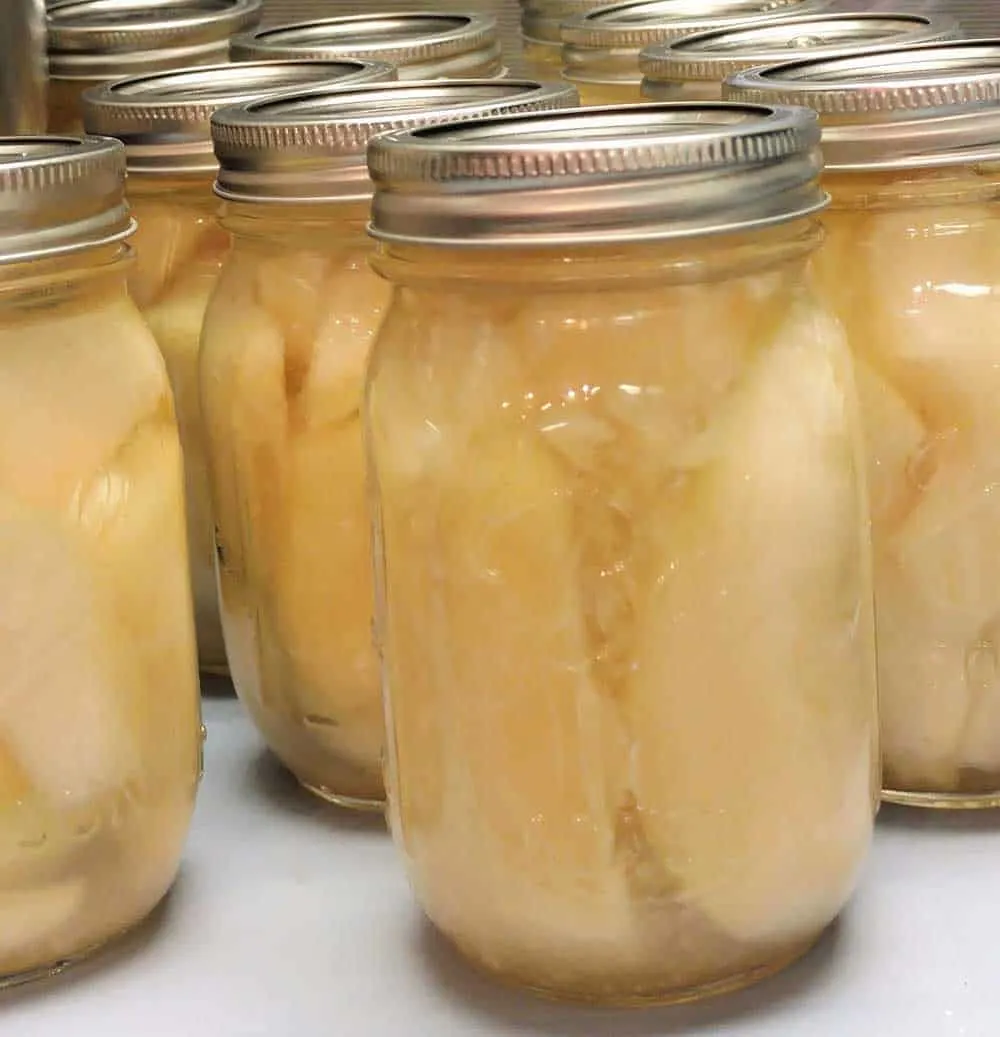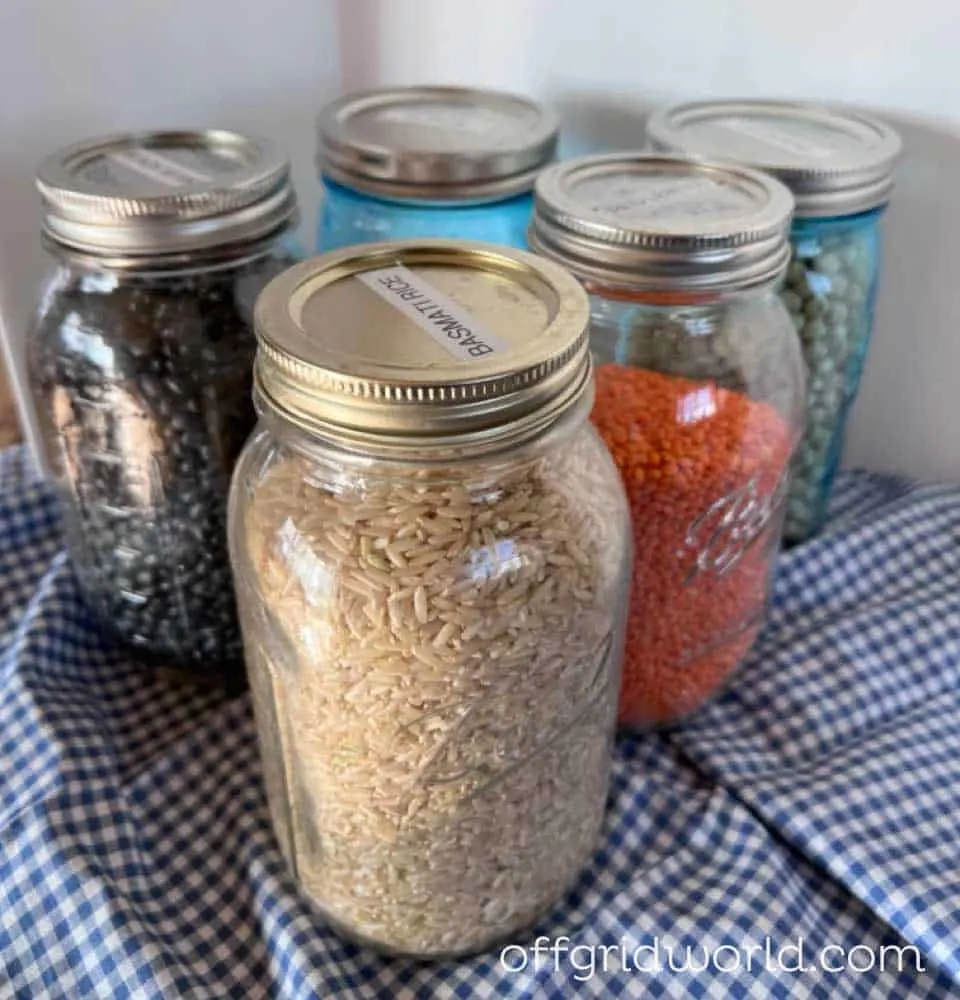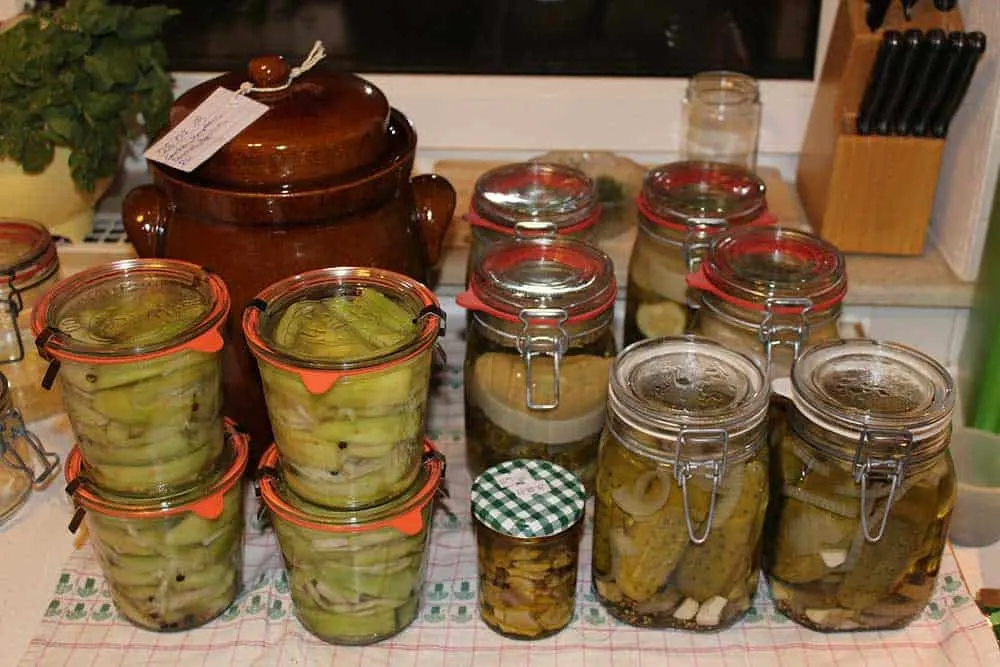Home canning is a great way to preserve food for later use, and anyone can do it with some preparation and practice. One of the most common questions about canning is whether or not the lids can be reused. This was a hot topic in 2020 when supply shortages made canning lids very difficult to find.
Here we’ll explore the answer to the question of reusing lids and provide some information about the associated risks.

This post contains affiliate links, and as an Amazon Associate I earn from qualifying purchases. This means we may earn a small commission if you choose to make a purchase through the link. There is no additional cost to you. See the disclosure here.
Is there a safe way to reuse canning lids?
Put simply, no. It is not safe to reuse canning jar lids. Metal canning lids are designed with a thin sealing compound around the outside edge that softens and molds to the rim of the jar when heated. When all goes well, this results in a vacuum seal that will preserve the food inside the jar.
Once a lid has been used, the seal is no longer effective. While some experienced canners have had success reusing lids a second time by reheating the gasket compound, it is not something that is recommended.
Fortunately, there are alternatives to conventional canning lids that make canning a bit more budget-friendly and shortage-proof. There are also many ways to reuse lids outside of the canning process.
Risks of reusing canning lids
If there were no risks associated with reusing lids, we’d probably all be doing it. So what’s the big deal? It comes down to two things: food safety (most important) and waste.
Below you can see the difference between a new lid and a used lid. The used lid has a clearly indented seal, while the new lid is uniform all around.

The difference between the seal on new and used canning lids. The used lid has an indented seal.
Seal failures can be dangerous
Used lids, even if properly cleaned and reheated, are much less likely than new canning lids to create an airtight seal. This doesn’t just potentially waste the batch of food you’re preserving; it can lead to bacteria growth and spoilage.
Sometimes it’s easy to spot a seal failure after you process a batch of food in the canner. If no vacuum was created in the jar, you’ll be able to pop the lid down in the center. If it sealed properly, the lid should be sucked down into the concave position and won’t have any give to it when pressed.
If you do catch a failed seal right away, you’ll have to either try to reprocess the food or refrigerate it and consume it before it goes bad.
Bigger problems can arise when a jar appears to have sealed properly, but the poor quality of the seal allows a small amount of oxygen to leak in over time while the jar sits in storage. This compromises the safety of the food and can create a dangerous breeding ground for bacteria.
Some of the most dangerous toxins that can end up in home-canned food, like botulism, are odorless and tasteless. So while you might easily notice if mold has made its way into a jar you pull out of storage, you might not notice the more insidious bugs lurking within.
Inefficiency and waste
If you’ve gotten this far into canning, you already know how much time and patience is involved in preparing and preserving a batch of food. You clean and prepare your jars, lids, and other equipment. Then you clean and prepare the food, fill your jars, load them into your canner, and wait. If you’re in a high-altitude state like we are, you wait even longer.
You also know what a letdown it is if your jars don’t seal. When this happens, long-term storage with your other canned foods is out of the question. You’ll either have to reprocess the jar with a new lid, refrigerate the jar and use its contents before it goes bad, or freeze it.
Nothing completely prevents an occasional failed seal, but you have much higher odds of achieving a proper seal when you use new lids. Why make canning harder on yourself by reusing lids with a higher risk of seal failure?

The metal rings (bands) can be reused many times as long as they are in good condition. Image: sjhuls/Adobe
Manufacturers and safety
Canning lid manufacturers will never recommend using single-use lids more than once. This is primarily for the safety of their consumers, though money likely also plays a part. They want you to buy more lids, right?
But money alone isn’t a huge factor, as the metal lids are only one component of the canning system, and a relatively cheap one at that. Pretty much everything else you invest in for canning can be reused.
Supply shortages are a legitimate concern, as most home canners discovered in 2020. But as I mentioned, there are ways to help alleviate this if history repeats itself.
So, if it’s not solely about the money, why do manufacturers tell us to use single-use lids only once? The bottom line is that it’s not worth the health risks to you and your family.

Image: pamela_d_mcadams / Adobe
What about the metal bands?
The screw-on bands – also known as rings – used for canning hold the lids in place while the jars are processed in a canner. They don’t serve much of a purpose once the jars have sealed and are ready for storage.
In fact, it is recommended you remove the metal band when putting your canned food up for storage because it can make it more difficult to notice any broken seals over time. Also, the bands can hold a bit of moisture and cause rust or mold to form under the ring.
The bands can be reused many times, as long as they remain dent-free and rust-free. Simply remove them after your batch of canned food has cooled, clean them in hot water, and let them thoroughly dry. Then store them until you’re ready to make your next batch of canned food.
Though you can use them repeatedly, bands might eventually show signs of damage or rust. If they do, they will need to be replaced.
What can you do with used canning lids?
If you’re like me and feel bad throwing used canning lids away, there are many ways to use them around the house. In the process of writing this article, I looked around and realized how much I rely on glass jars for storing all kinds of things.
Here are a few ways I use jars and used canning lids:
- Dry goods in the pantry like loose-leaf tea, beans, and flour
- Refrigerator pickled peppers and beets (these don’t require a seal; I make them when I have batches of produce too small to bother canning)
- Fermented foods that are ready to store in the fridge
- Homemade lotions and body scrubs
- Nuts and seeds stored in the freezer
- Garden seed storage
Basically, anything not requiring a seal for preservation is a prime candidate for used lids.

Canning lids can be reused to store pantry items
You can also get creative and use them for crafts or other projects, and if you still find yourself with a surplus of used canning lids, they can be recycled like other metals.

Canning lids reused on loose leaf tea jars
Reusable canning lids are a great alternative
If buying new lids every year seems like a waste, consider investing in reusable lids. These are great to have on hand for primary use or backup in case single-use lids become a rare commodity again.
Two of the most popular brands of reusable lids are Tattler and Harvest Guard. Both brands consist of plastic lids with a lip meant to hold a food-grade rubber ring. The lids are held in place with a metal screw band while processing, like regular canning lids.
Harvest Guard and Tattler lids are made from materials safe for both water bath and pressure canning. From the Tattler website:
“TATTLER Reusable Plastic Canning Lids are manufactured using a plastic compound that is safe for direct contact with food products. We utilize an FDA and USDA approved, food grade product known as Polyoxymethylene Copolymer (POM) or Acetal Copolymer.
The rubber rings (gaskets) are made from a food grade nitrile rubber and contain no latex.
Neither formulation contains any Bisphenol A (BPA) or phthalates!”
Plastic reusable lids come in different sizes to fit standard and wide-mouth canning jars. The lids and rubber gaskets can be reused year after year as long as they remain in good condition.
If storing your food with a plastic lid isn’t your cup of tea, Weck glass lids could be a good option. Weck has a variety of jar sizes and shapes. Like Tattler and Harvest Guard, Weck’s glass lids come with a removable rubber seal.
These jars do not use metal rings to hold the lids in place while processing. Instead, they come with metal clamps. A glass lid system will require a bit more of an investment to get started than plastic, but it should last for years with the proper care.

Home food preservation is an extremely rewarding skill to learn. It’s a great feeling to stock the pantry with freshly-processed mason jars of brightly colored foods to last all winter.
With good quality canning supplies, you greatly increase your chance of success. I think we’ve established that reusing single use canning lids is not a good idea, but that there are many other ways to use up those old lids and some interesting alternatives to try that will increase your odds of getting a good seal on your jars.

